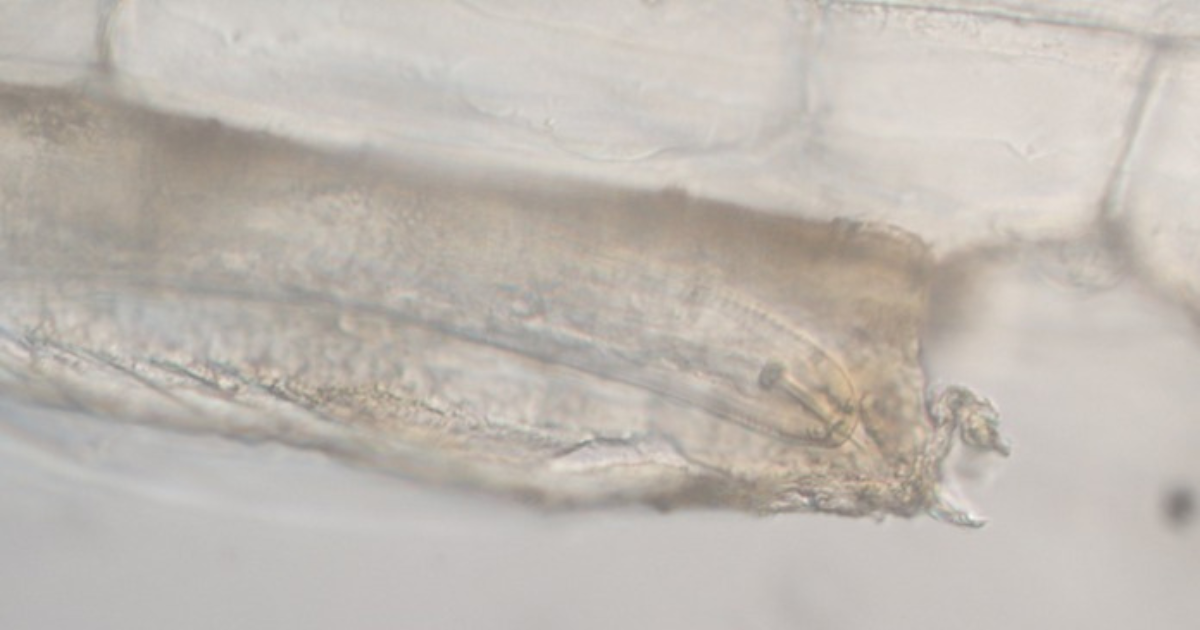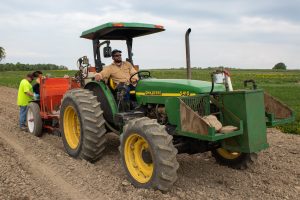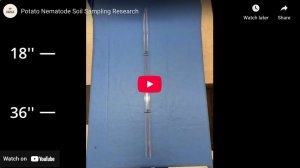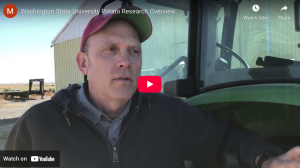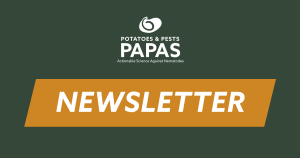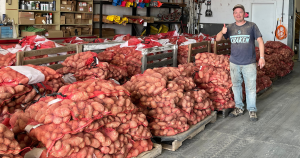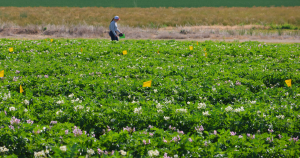Life History and Spread of Potato Cyst Nematode
Potato cyst nematodes (PCN) are devastating pests of potato and include two species, Globodera pallida, the pale (white) cyst nematode and Globodera rostochiensis, the golden (yellow) nematode.
Cysts are the dead female body of the nematode. Each cyst can be filled with 200-500 eggs which hatch only when a chemical stimulus called a hatching factor is released by a host plant such as potato. After hatching the J2 will infect roots of a host plant, such as potato (Fig 1).

The life cycle of PCN is summarized in Fig. 2. It takes about 12-16 weeks for the nematode to complete its life cycle.
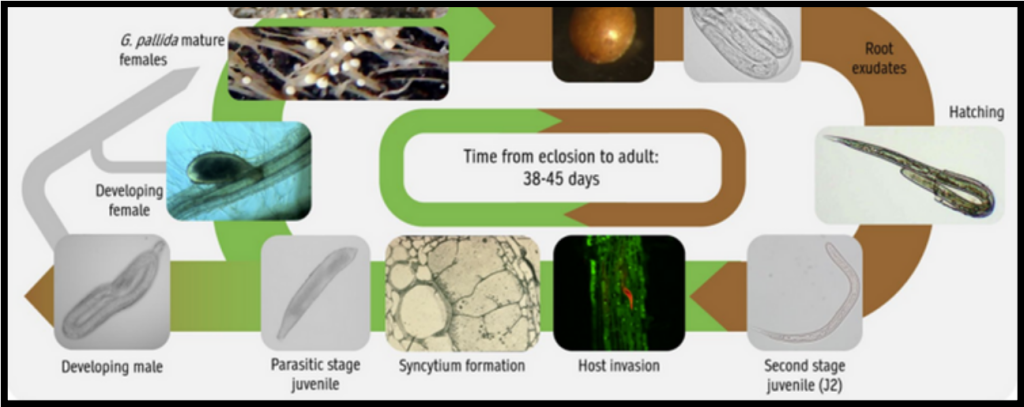
The ratio of male to female nematodes depends on a number of factors but the amount of nutrients is a major determining factor. A nutritious feeding site typically induces more females, whereas a predominance of males develop when the feeding site is poorer in nutrition as may happen if the plant is resistant or otherwise stressed.
The cyst acts as a protective covering for the encysted eggs which remain dormant and viable for 30+ years in the soil in the absence of a host. Only once hatching factors are detected do eggs hatch to begin the cycle again.
Because cysts are found in soil, they are easily spread in infested soil clinging to any type of equipment used in a field (Figure 3). Cysts can be spread through infested soil on:
- Farm machinery/equipment
- Tubers/plant material
- Boots/clothing
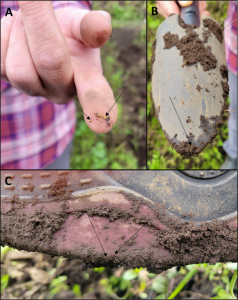
Containment efforts focus on eliminating the spread of contaminated soil from farm to farm by sanitizing equipment and using certified seed potatoes in non-infested fields.
This material is based upon work that is supported by the National Institute of Food and Agriculture, U.S. Department of Agriculture, under award number 2021-38640-39159 through the Western Sustainable Agriculture Research and Education program under project number 2021-04770. USDA is an equal opportunity employer and service provider. Any opinions, findings, conclusions, or recommendations expressed in this publication are those of the author(s) and do not necessarily reflect the view of the U.S. Department of Agriculture.
Reference:
- Price, J. A., Coyne, D., Blok, V. C., & Jones, J. T. (2021). Potato cyst nematodes Globodera rostochiensis and G. pallida. Molecular Plant Pathology, 22(5), 495-507.

